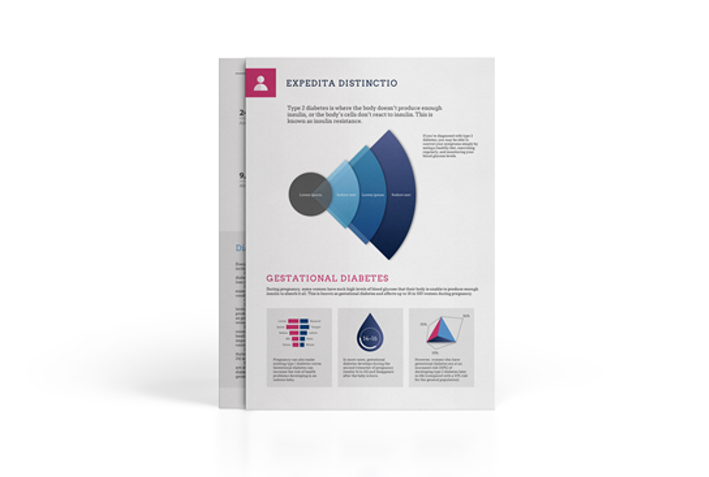Orphan drugs: overcoming barriers to market access

The first part of this two-part series by Ewan Bennett discussed the challenges surrounding funding for orphan drugs, specifically for health technology assessment (HTA). This second article examines what manufacturers should consider, after successfully overcoming any HTA hurdles, to achieve market access.
Once reimbursement has been secured, the next challenge is convincing clinicians and payers of the orphan drug’s value in treating patients. With other drugs, the value is generally known to clinicians prior to them achieving reimbursement, and they may even have been involved in advocating for their reimbursement during the HTA process. However, with orphan drugs even specialist clinicians may have limited experience or knowledge of the drug.
Engaging and educating clinicians on the full burden of the disease and the benefits of the drug is, therefore, an important step. This should consist of materials which can help clinicians diagnose the disease,1 and which describe its full humanistic burden, the relevance of the outcomes assessed in the clinical trials, and the benefits of the drug in these trials.
However, these are very busy people without the time to review the literature in the depth that an HTA committee will! SO, creating engaging and compelling materials that educate and inform is vital in securing their attention and ensuring content retention. One example of such materials is a flashcard, which presents the ‘story’ for the drug using infographics and other graphical representations (Figure 1), that can be left with clinicians.
Figure 1: An example of a flashcard

The key concerns clinicians and payers are likely to have about an orphan drug are the population (both size and patient characteristics) and outcomes assessed in the clinical trial programme; while specialists in rare diseases will be aware of the limitations associated with conducting trials for these conditions, the small sample sizes and surrogate endpoints may alarm some stakeholders. While this is a problem inherent to rare disease studies, it can, in part, be mitigated by supplying real-world evidence, which is increasingly recognised as important by payers. A real-world registry can therefore be an important tool in demonstrating the effectiveness of the drug. However, this must be as independent from the manufacturer’s interests as possible for the data to be seen as credible.2 So, a careful balance must be struck between oversight and funding.
A real-world registry is unlikely to achieve the necessary financial support without manufacturer funding, but such support will increase the scepticism with which the data are viewed. An independent oversight committee, with as few ties to the manufacturer as possible, could help to determine the process and outcomes to be considered in the registry.2 However, the registry must also collect data that payers are interested in to be truly useful. Therefore, before initiating a registry, research the requirements and expectations of payers globally, and provide these recommendations to the oversight committee.
A real-world registry can also form part of a wider support network for patients with the rare disease; while such networks are not always valued by payers for more common conditions, in rare diseases they provide added value that can help payers justify the drug costs. There are various options for supporting patients, and the most appropriate ones will depend on both the nature of the disease and the form of treatment. Some examples of support for patients include:
- Home nurse visits – Providing specialist nurse visits at regular intervals can give support to patients who feel isolated by their disease, and may achieve better treatment outcomes. This support could consist of health checks, ensuring a patient has an adequate supply of medication, resolving any issues a patient may have with their treatment, or even just lending a sympathetic ear.
- Drug administration training – If the drug requires self-injection or is otherwise complicated to administer, providing patient training can help ensure optimal patient outcomes and adherence.
- Online support – Providing patients with an online hub to discuss their issues with other patients, find information on their disease, and examine their treatment options, can help patients feel cared for and engaged in their treatment pathway.
The last option here can also form part of a larger advocacy and support network. The patient voice for rare diseases is often underfunded and can be drowned out by those for more prevalent conditions. Lending financial support to existing patient advocacy and education groups or charities, or creating such groups where they don’t exist already, can help empower patients and ensure they receive the support and treatment they need.
A final option for improving market access is via a managed market entry agreement, or a similar strategy aimed at easing the concerns of payers around the high drug costs. This will typically be a higher-risk route than the others outlined, and is expensive, potentially, if the drug does not perform as expected. Agreements such as this will depend on the nature of the orphan drug, but examples include:
- Linking clinical outcomes to the price paid, with proportional discounts being offered based on performance in the real world versus those expected from clinical trials. However, this may be challenging if surrogate outcomes are used, and will require an extensive data collection network.
- Offering free treatment for an initial trial period (e.g. 1 month). For chronic treatments, free treatment could be offered for the period until an outcome can be assessed; patients who achieve a treatment response continue on treatment, which is charged for thereafter, while those who fail to achieve a response discontinue treatment and there is no cost to the healthcare system.
While the options outlined here can help demonstrate the value of both the orphan drug and the manufacturer as a partner, payers are still likely to have one primary consideration: What is it going to cost me? This will always be a challenging hurdle to overcome but, by emphasising the small and predictable patient population (and therefore budget impact), the additional services they offer, and the impact the disease has on patients, the manufacturer should be able to overcome it and secure market access. After all, no patient should suffer, when effective treatments are available, simply because there are fewer people with their disease.
Conclusion
Orphan drugs represent a unique challenge in demonstrating value, owing to the limited evidence, small patient pools, and high prices. Approaches which work for non-orphan drugs may, therefore, be a poor choice for orphan drugs, and the value of alternative, innovative solutions should not be underestimated. In addition, careful planning, research, and engagement with patients, clinicians, and payers at every stage of the process will also be vital in maximising the chances of success.
References:
- Shelley S. The business of orphan drugs is booming. Pharmaceutical Commerce. Available from http://pharmaceuticalcommerce.com/brand-marketing-communications/the-business-of-orphan-drugs-is-booming/ (accessed December 2016). 2015.
- Hollak C E, Biegstraaten M, Levi M, Hagendijk R. Post-authorisation assessment of orphan drugs. The Lancet. 2015 Nov 14;386(10007):1940-1.
About the author:
Ewan Bennett is Principal Medical Writer at DRG Abacus. He joined the company in 2011, and works with pharma companies on value demonstration and market access for their products. He has extensive experience in rare diseases, helping develop materials to support global market access and health technology assessments in the UK.
He holds an EngD in Medical Devices from the University of Strathclyde and an MSci in Medicinal Chemistry from the University of Glasgow.











